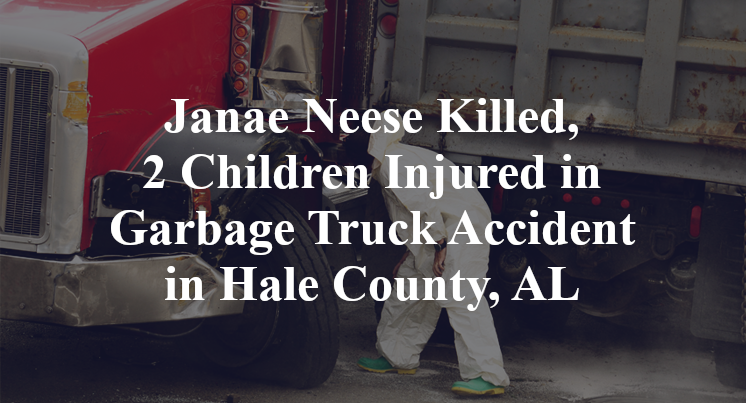Janae Neese Killed, 2 Children Injured in Garbage Truck Accident in Hale County, AL
Hale County, AL — November 7, 2025, Janae Neese was killed and two children were injured in a garbage truck accident just before 7:45 a.m. along S.H. 14.
According to authorities, three people—26-year-old Janae Neese, an 11-year-old, and a 5-year-old—were traveling in a Hyundai Elantra on State Highway 14 in the vicinity several miles east of Eutaw when the accident took place.

Details surrounding the accident remain scarce. Officials indicate that, for as yet unknown reasons, a collision occurred between the front-end of the Elantra and the rear-end of a Freightliner garbage truck. The Elantra apparently caught on fire over the course of the accident.
Neese reportedly did not survive the wreck; the two children suffered injuries of unknown severity and were flown to area medical facilities in order to receive necessary treatment. Additional information pertaining to this incident is not available at this point in time. The investigation is currently ongoing.
Commentary by Attorney Michael Grossman
Crashes involving the rear-end of a garbage truck almost always lead people to assume the smaller vehicle must have been following too closely or not paying attention. But the law doesn’t just stop at who hit whom—it demands a deeper look at why the crash happened in the first place. And in cases like this, particularly when a truck is struck from behind, the questions worth asking go well beyond surface-level assumptions.
The first issue investigators will need to sort out is whether the garbage truck was moving or stopped at the time of the collision. That’s not a minor detail. If the truck was actively traveling down the highway, then speed, following distance, and reaction time are important to consider. But if it was stopped—or nearly stopped—in an active lane of traffic without proper warning or lighting, that changes the legal equation entirely.
One critical question is whether the rear of the truck was clearly visible. Garbage trucks have large, flat rear ends that can be extremely difficult to see in certain conditions—especially if they're painted in dull or non-reflective colors, or if the lighting was poor. Was the truck equipped with proper reflectors, hazard lights, or rear strobes? Did the driver use them? These are not just safety best practices—they are often legal requirements, especially on highways where traffic is moving at high speed.
It’s also worth asking whether the truck made an unexpected stop, possibly to pick up a load or deal with a mechanical issue. Even a brief pause in the wrong spot can create a deadly trap for oncoming traffic. That’s why the investigation needs to recover dash cam footage, black box data from both vehicles, and any potential witness accounts.
And while it’s possible the driver of the Hyundai didn’t see the truck in time, we can’t assume that was due to carelessness. Visual obstructions, sun glare, or a sudden maneuver by the truck might have given her little or no time to react. Without clear evidence, assigning blame prematurely does a disservice to everyone involved.
Key Takeaways:
- Whether the garbage truck was stopped or moving is crucial to understanding the mechanics and liability of the crash.
- Visibility issues—such as reflectors, lighting, and truck color—can play a major role in rear-end collisions.
- Investigators should recover ECM data, dash cam footage, and witness statements to clarify each vehicle’s actions.
- Legal responsibility depends on context, not assumptions based solely on which vehicle struck the other.

“These are essential reads for anyone dealing with the aftermath of a truck wreck”– Attorney Cory Carlson